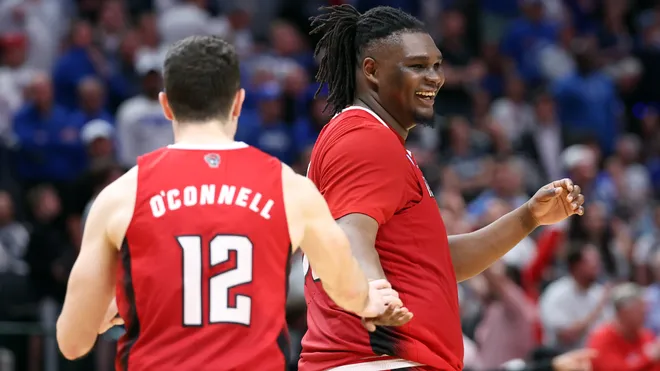Historic Underdogs: The Legacy of the Lowest Seeds in March Madness

A thrilling moment highlighting the lowest seeds in March Madness.
Introduction
Every year, the NCAA Division I Men’s Basketball Tournament—affectionately dubbed “March Madness”—captures the imagination of sports fans. One of the most thrilling aspects of the tournament is seeing underdog teams, or lower seeds, achieve the unexpected. Since the men’s bracket expanded to 64 squads in 1985, these so-called “Cinderella” teams have often sent shockwaves across the nation by toppling heavy favorites. One of the most notable examples came in the 2023–24 season, when NC State, seeded No. 11 in the South region, made a breathtaking run all the way to the Final Four.
In this expanded overview, we’ll revisit the history of the lowest seeds in March Madness, spotlighting the remarkable achievements of double-digit seeds that defied the odds.
Origins of the Modern Tournament
The NCAA men’s tournament traces its roots back to 1939, but the modern format we recognize today launched in 1985 with a field of 64 teams. Over time, the tournament grew to 68 teams, incorporating First Four games. Despite the expansion and changes, the attraction remains the same: one-elimination drama where any team can triumph on a given night.
History of Lowest Seeds in March Madness
1. The Lowest Seed to Win It All
- No. 8 Villanova (1985)
In the very first year of the 64-team format, the Villanova Wildcats shocked top-ranked Georgetown to claim the national title. Villanova remains the only No. 8 seed to accomplish this remarkable feat, setting the precedent for every lower-seeded team that dreams of cutting down the nets.
2. Lowest Seeds to Reach the Final Four
Since 1985, only seven double-digit seeds have advanced to the national semifinals:
- **No. 11 LSU (1986)
- No. 11 George Mason (2006)
- No. 11 VCU (2011)
- No. 10 Syracuse (2016)
- No. 11 Loyola Chicago (2018)
- No. 11 UCLA (2021)
- No. 11 NC State (2024)**
Each of these incredible stories captures how lower seeds can keep the dream alive with a few clutch wins, surprising both top seeds and basketball experts alike.
3. The Lowest Seeds to Reach the Elite Eight
- No. 15 Saint Peter’s (2022)
Often overshadowed by bigger-name programs, Saint Peter’s defied conventional expectations by making it to the Elite Eight, further proving that smaller schools can compete on the national stage.
4. The Lowest Seeds to Reach the Sweet 16
Reaching the Sweet 16 is an accomplishment in itself for any team, but especially for a No. 15 seed. Multiple teams have achieved this milestone:
- No. 15 Florida Gulf Coast (2013)
- No. 15 Oral Roberts (2021)
- No. 15 Saint Peter’s (2022)
- No. 15 Princeton (2023)
Highest-Seeded Championship Appearances
While No. 8 seeds have clinched a title, they have also shown up in multiple championship games—even if they didn’t always win:
- No. 8 Villanova (1985) — Beat Georgetown for the title
- No. 8 Butler (2011) — Fell to Connecticut
- No. 8 Kentucky (2014) — Lost to UConn
- No. 8 North Carolina (2022) — Lost in the final
In 2014, a unique showdown occurred when No. 7 UConn defeated No. 8 Kentucky, marking the highest total seeding for a title matchup to date (7 + 8 = 15).
Why Underdogs Matter
- National Fascination: From brackets busted on day one to social media frenzy, everyone loves a Cinderella story.
- Team Grit: Lower-seeded teams often embody grit and resolve, providing an inspiring storyline.
- Level Playing Field: As the talent pool widens and top players emerge from smaller programs, parity in college basketball continues to grow.
Conclusion
March Madness thrives on unpredictability, and every season, fans wonder which low seeds will go on another exhilarating run. From No. 15 seeds like Saint Peter’s reaching the Elite Eight to No. 11 seeds like NC State battling to the Final Four, these stories prove that anything can happen in the NCAA tournament. Keep your eyes on those double-digit seeds, because you never know which underdog might stun the world next.
Author’s Note
This article is written by Ethan Caldwell for Varsity Sports District News. All records referenced are accurate as of the 2024–25 collegiate basketball season.






